Dudesweet Presents: Dragsweet 2011, The Royal Wedding
Bangkok's sexier, more hip version of the royal wedding, brought to you by Dudesweet.
Consider Dudesweet’s annual drag night a hedonistic dress up party. There’s only one guideline: the theme is Royal Wedding, so get creative with that. You can be the Bride, the Groom, or even a naughty pastor. Don’t stress if you don’t want to dress, says Dudesweet Ambassador Note Pongsuang, but when was the last time you had a chance to do something like this? It’s on at Castro RCA from 9pm until the bars close. Cover is B250 including a free drink, or B150 and a free drink if you come before 10pm.
Note gave us a quick Q&A telling us what to expect.
What should we expect on Dragsweet night?
Lots of stunning and creative costumes, which I’m sure Lady Gaga would send her spies to copy.
What should we wear?
Anything but recycled costumes. This is not a high school costume party.
Who would look better in a dress, Prince Harry or Prince William?
Prince Harry of course. He looks really good in everything, even in his invisible cape.
Advertisement

Everybody’s lining up to get a bite of this classic Thai sweet (B20 for 9) at a spot called Kanom Bueng Ma Joi, located just outside of the hospital. They also sell kanom pung yuwan sai kai, a delicious Thai-style crepe with bean sprouts and colorful flakes of coconut called kanom foi thong.
This stand right on the corner of St. Louis Soi 1 fries up a mean oyster omelet, with flour and string beans (B30). They say that their best seller is their basic pad Thai (B30) and that they can cook it fast, a key point to consider when you’re picking it up after work. Open 3pm-9pm

Every variation on everyone’s favorite dish can be found within a 20-foot walk from the corner of St. Louis Soi 1. From 6:30am-6pm, these two sisters pound up somtam Thai (B30), somtam khai kem (B35), and somtam Lao (B25), among other delights. When you order, they’ll urge you to get a piece of grilled chicken (B20) and Isaan-style mushroom soup (B30) to go with the spicy salad—and you really should.
Walk down a little further, and just outside of the St. Louis Hospital gates is a guy that grills just about every type of street meat you can shake a stick at: naem (sour sausage), chicken, saigrok (sausage), pork and beef are all B10 a stick and ready to grab and go.
Across the streets from the gates St. Louis University gates is a little restaurant that offers a roof over your head while they serve their specialty yam pladuk foo (sweet and sour mango and catfish salad, B50). The crunchy fish, dipped in a sweet sauce to balance out the saltiness goes well with a dish of moo yang (B40).
Deeper into the soi, is a quaint restaurant with a white roof. Inside, they serve a couple of great Isaan meat salads. Their taap saep (spicy Isaan-style pork, B45) has just the right balance between spiciness and sourness—and you can ask them to make it to your taste. Also worth trying is their tom saep kadook gaew, a spicy soup dish that goes well with their pork salad (B40).
On the next soi, St. Louis soi 2, you’ll find an outdoor cafeteria-like area. Make sure you head to Lom Poh, a restaurant in the very back corner. Their spicy stir-fry with basil and hundred-year eggs is firm favorite (B45). The eggs are cooked in batter with lime leaves, leaving you stuffed and satisfied.
Getting There. Just get off at BTS Surasak and take exit 3.
When to Go. The soi is at its busiest from 8-11am and 5-8pm.
Advertisement
A perfect choice for amateur grillers and small-balcony living, this porcelain-finished piece sits nicely on a table or stand, and while the actual grill space may be small, it uses charcoal, or wood chips if you wanna be fancy, and has some cool features (considering the low price), such as the aluminum vent on the lid and the ash catcher on the bottom.
Price: B3,350 at True Value Hardware.
Don’t be turned off by this tabletop grill just because it’s electric. The convenient small size is well-suited if you live in an apartment with a small balcony. Though it may not be the same as charcoal grill or even a gas-powered fire, it packs just as much heat (without the char-grilled flavor)
Price: B13,900 at The Barbecue Store.
This gas-powered grill has three primary burners and one side burner. Perfect for families or hosting a party, it’s equipped with a swing out table for an extra surface and is big enough to fit in a turkey or a roast.
Price: B24,780 at Verasu.
Get that delicious charcoal taste without the fuss and messiness of old-fashioned fire starters which, experts will tell you, take forever. This grill features a gas-powered charcoal lighter that does the hard work for you, so you’ll be grilling in under 10 minutes.
Price: B29,500 at True Value.
Great for beginners who don’t want to compromise on the authenticity of charcoal. This baby is portable and the stand folds for easy storage. Just throw in some charcoal, set it alight, wait wait wait and you’re ready to go. Great for camping trips too. And, oh, it’s attractively cheap.
Price: B1,150 at True Value Hardware.
This contemporary-style grill has won many design awards and is perfect for those who don’t have too much space for barbecuing. Its gas-powered, dual heating rings deliver fair amounts of heat, so you can still do everything from grilling steaks to baking pizzas.
Price: B26,900 at The Barbecue Store.
The Barbecue Store. 21 Sukhumvit Soi 39, 02-662-6665. Open Mon-Fri10:30am-6pm, Sat 10:30am-5pm, Sun 10:30am-4pm
True Value Hardware. 1/F, K. Village, Sukhumvit Soi 26, 02-661-2433. Open daily 9am-9pm
Verasu. 87/3 Wireless Rd., 02-254-8109. Open 9am-7pm
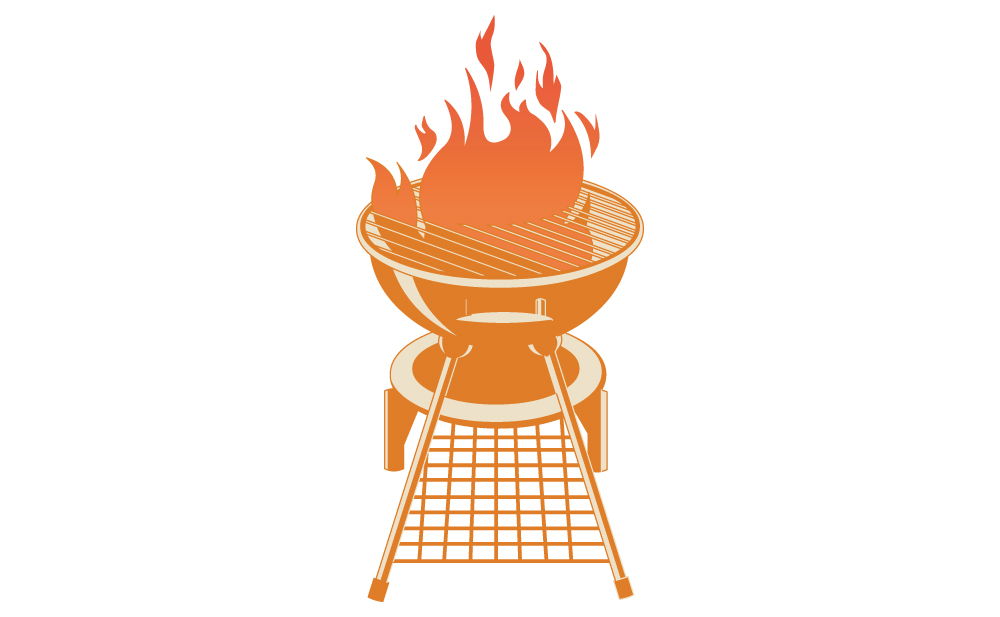 1.) Know the difference between direct heating and indirect heating. Direct heating is when your food is directly above the burning charcoals; it’s best for grilling burgers and sausages. Indirect heating is when your food is cooking thanks to the ambient heat, like in an oven. Indirect grilling is best for thick cuts of meat.
1.) Know the difference between direct heating and indirect heating. Direct heating is when your food is directly above the burning charcoals; it’s best for grilling burgers and sausages. Indirect heating is when your food is cooking thanks to the ambient heat, like in an oven. Indirect grilling is best for thick cuts of meat.
2.) For indirect grilling, place your coals on the left and right side of your grill, leaving the middle strip empty. When you’re ready to cook, place a foil tray in the empty space to catch juices from the meat. Close the lid.
3.) Everyone has their own methods of lighting a fire, but remember the basics: don’t put too much coal at first (you can always add more), don’t smother the fire (no air means no fire), and if you use lighter fluid (even though that’s cheating), make sure it’s fully evaporated before lighting the coals.
4.) Judge the heat by placing your hand just over top of the grill and count the number of seconds you can hold it there. Five seconds means it’s low heat, Four seconds means it’s medium, and three means it’s high. Any less than three, let it cool off; any more than five, add more coal and let it heat up.
5.) Trim off the excess fat from your meat, because the drips will cause the fire to flare up and burn your steak. When you’re cooking chicken or turkey, don’t pierce the skin or else your cut will lose flavor and moisture.
Advertisement
Despite recent talk of free WiFi and iPads for all school children, is life really that simple for young people living in Bangkok? Sure your younger brothers and sisters might have all the trappings of modern life from their iPhone 4 to their designer handbag, but what about the kids who don’t get to hang in the high end malls, who in fact don’t even have a roof over their heads?
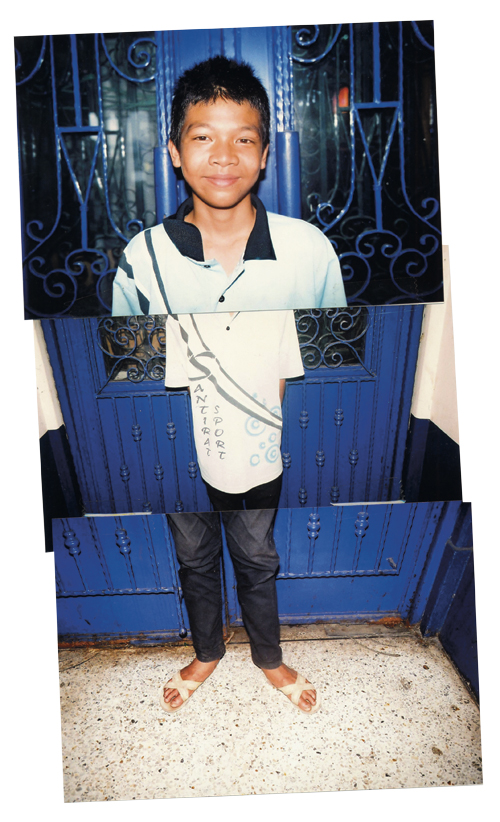
Gott (14), found sleeping on the floor of Hua lamphong terminus wants to be a soldier when he grows up.
“School’s boring. I’d rather play FIFA video games.” —Gott, 14

If Man (15) doesn’t find random work in the city, he often has to find a place on the street to stay.

Boy (17) says he escaped death because of his Sak Yant tattoo
“We went out to Bang Saen and drank some alcohol. Just us. We kissed and watched the stars all night. It was romantic.”—Boy, 17
Earlier this year, Ohm Phanphiroj’s exhibition, The Streets of Broken Dreams, focused on street prostitutes and raised plenty of controversy and reaction.
More recently, fashion photographer turned documentary maker Chardjakaj Waikawee is the latest to shine a spotlight on this forgotten section of society in his recent exhibition, Youth. As he returns to the streets for a new documentary film project we went with him to find out the reality of life for many of Bangkok’s young and homeless.
We drive to Saphan Phut and despite the lateness of the hour the streets are packed. There’s a club like atmosphere except all the kids milling around are way too young to go to bars. In fact, most are still wearing their school uniforms while busily getting drunk. We approach one group of especially loud kids; the boys are wearing oversized shirts and the girls have on short jean shorts and tight tank tops.
When we try to speak to one guy named Boy (17), wearing a hip-hop sized shirt and knock-off Crocs, the crowd of about ten heckle us. Still, Boy seems keen to answer when we ask him what the best day of his life was. “I was with my girlfriend,” he says, leaning against the bridge rail. “We went out to Bang Saen, and drank some alcohol. Just us. We kissed and watched the stars all night. It was romantic.”
It sounds pretty innocent, a rite of passage all young people go through, but he also reveals a darker side to life on the streets. He’s been arrested in the past for racing his bike at night and doesn’t have to think long when asked what his biggest fear is.
“I’m scared of getting stabbed by a bunch of people.” His friend interrupts our conversation to explain that Boy actually got stabbed today. “But the blade didn’t go through because he has a sak yant [protective tattoo].”
Boy nods his head proudly, and takes off his shirt to reveal a large tattoo he has on his back. Another friend comes up and takes off his shirt, to show us a scar on the side of his ribs. He wasn’t as lucky when he was knifed.
While Boy runs off to get more beer, a small boy ambles over to us, asking for change. We ask the boy what he’s doing here and he agrees to tell us only if we pay him. A few baht later, Nu (14) explains us that he spends most nights hanging out on the bridge begging for change. “It’s ok, sometimes it’s even fun,” he says, shrugging.
Nu ended up on the street after his parents left him on what he remembers as the worst day of his life. Now he either stays at a friend’s house or, as he puts it, finds a place to sleep. While he can remember the worst day of his life quickly enough, he struggles to think of a best day. He squints his eyes trying to search deeper into his brain before coming up with the answer. “I don’t think I’ve had one. I can’t remember.”
Nu might only be 14 years old but he’s already aware of the dangers of being out on the street. “Someone could kidnap me and sell me somewhere,” he says. “Maybe they’d make me a child prostitute or something.” He obviously knows a thing or two about this sort of thing. “Some of my friends got taken away,” he says. “I’ve never seen them again.
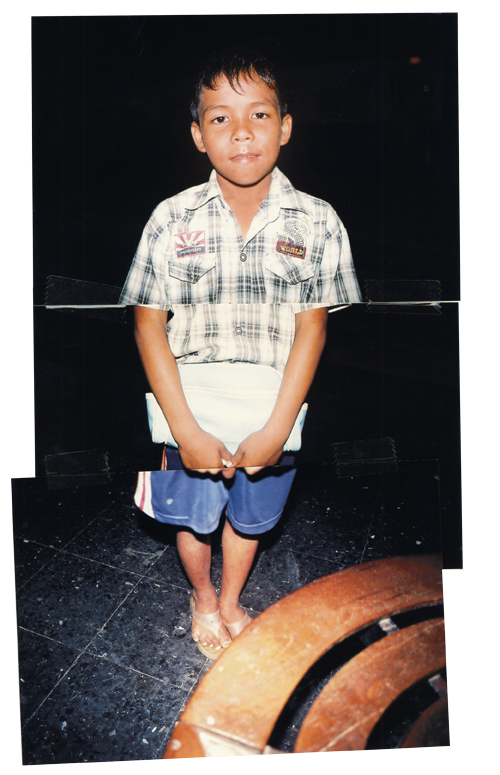
“All I want for my birthday is for my whole family to be together.”
—Gop, 8
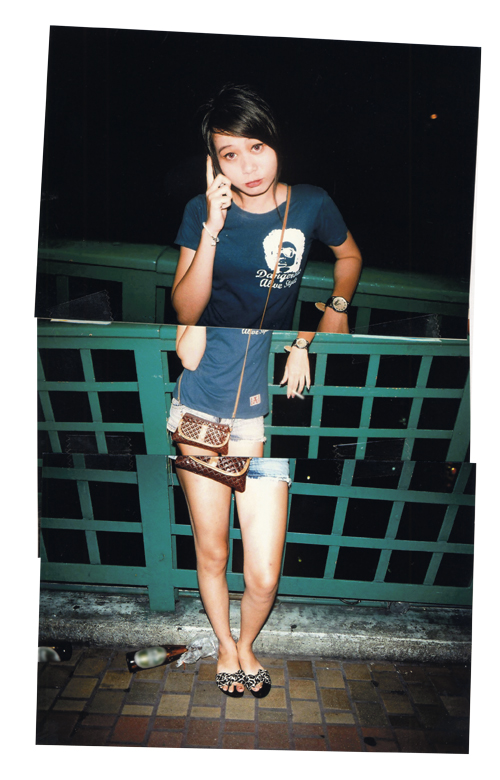
Prieow (19) loves the thrill of speeding on her boyfriend’s motorcycle.
“I love hanging out where there’s fast bikes, and people racing each other.”
—Prieow, 19
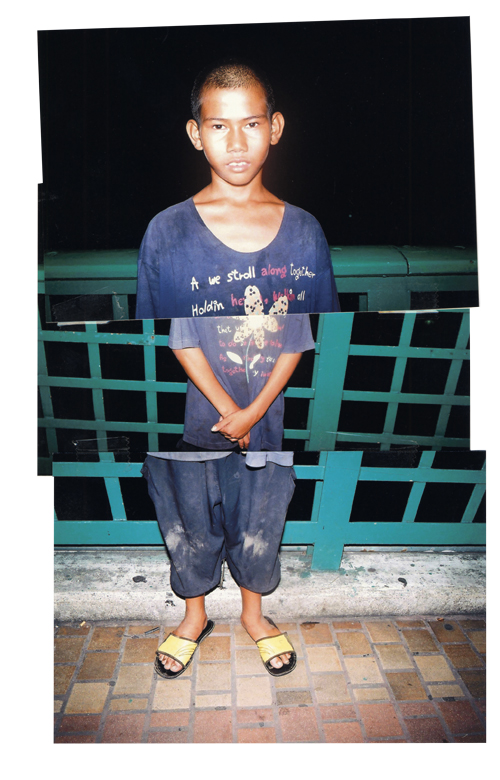
Nu (14) was abandoned by his family.
“I spend most of my nights begging for change. It’s ok, sometimes it’s even fun.”
—Nu, 14
57%
Street children who listed begging as their occupation.
4%
Street children who are sex workers.
18%
Street children who say they live on the streets to make money for their families.
15%
Street children who said they have been victims of sexual abuse.
88%
Street children who have spent more than a year on the streets.
34%
Street children who have spent more than three years on the streets.
87%
Street children who have stoppedattending school.
9%
Street children who have never been to school.
 Goy-Ty (16) hasn’t seen her parents for a while.
Goy-Ty (16) hasn’t seen her parents for a while.
“The good days have passed already. It seems like every day is just tough lately.”—Goy-Ty, 16
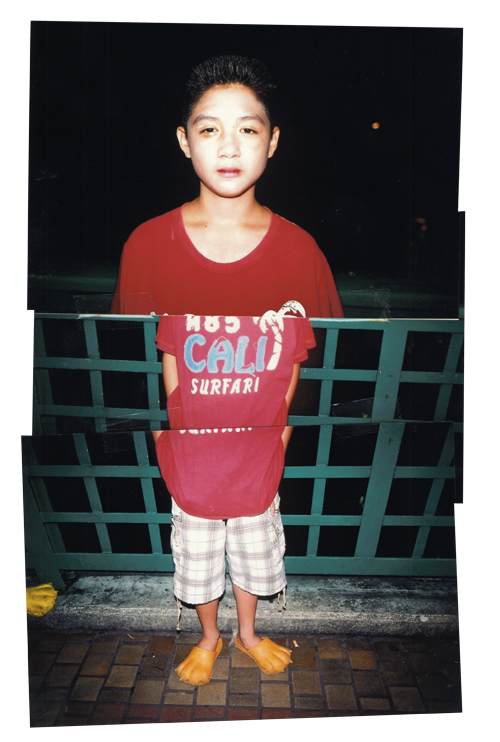
14-year-old Pete’s greatest fear is girls.
“We got in [to a pub] by giving the bouncer B90.”—Pete, 14
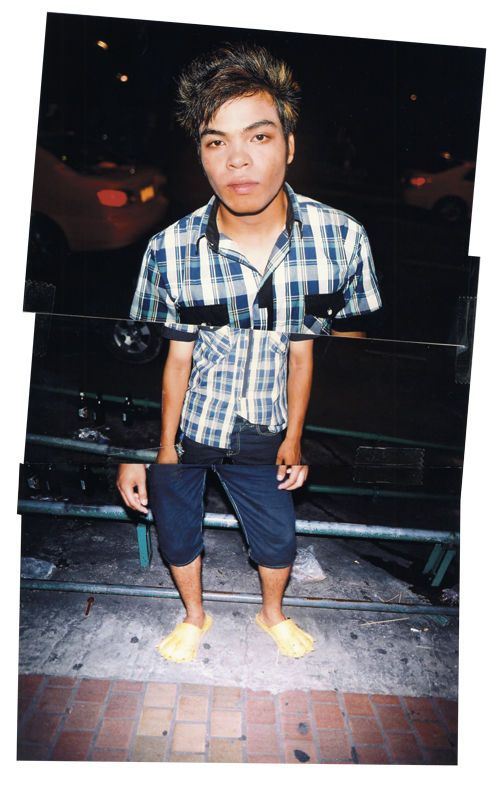
Daeng (20) is coping with heartbreak by hanging out at Saphan Phut.
“The best day of my life was when I was with my girlfriend. The worst day was when she dumped me, yesterday.”—Daeng, 20
At this point, the crowd of teens are becoming increasingly intrigued by what we are doing. They urge Goy-Ty (16), who is constantly adjusting her makeup and clothing, to do an interview with us. For someone so young she seems pretty world weary, as she announces that she’s given up on school. “The good days have passed already,” she says, laughing. “It seems like every day is just tough lately.”
Still, unlike some, she’s still in contact with her parents, even if she only goes to see them when she needs money. It’s money she uses to pursue her favorite pastime. “I love going to pubs,” she says, cheering up a little bit. “My favorite is the Regent.”
We leave Goy-Ty but quickly run into 14-year-old Pete, who is busy making stabbing motions and pointing to our cameras. Like Goy-Ty, he likes to hang out at pubs and remembers his first time drinking there as the best day of his life.
“I went to the pub at a full moon party,” he says, chin raised trying not to break eye contact. “It was super fun. We got in by giving the bouncers B90 and got really drunk.”
Pete might be only 14 but he’s also had to deal with the more violent aspects of life out on the streets. “I was chasing some guys and they started chasing me back with a knife,” he says with a cocky smile as he recalls the day he almost got stabbed. Still, despite the tough man exterior, there’s also a hint of the child he still is as he tells us his biggest fear: “Girls!” he blurts out before disappearing for more beer.
We sense the kids are tiring of our presence and want to be left alone to their vices because they start to inch away from us. Pete comes back with a couple more beers and they fill up their glasses. It’s around 1am and they’ll probably do the same thing tomorrow and the day after. As they refuse to talk further, we decide to pack it in for the night to go back to the comfort of our beds—not a choice many of these kids have.
Chardchakaj Waikawee, 29, used to take photos of models for a living but decided to focus on a very different subject in his exhibition, Youth, about disenfranchised kids in Bangkok. We asked him why he swapped the glamor of the catwalk for seedy sois and what inspires him to document these children.
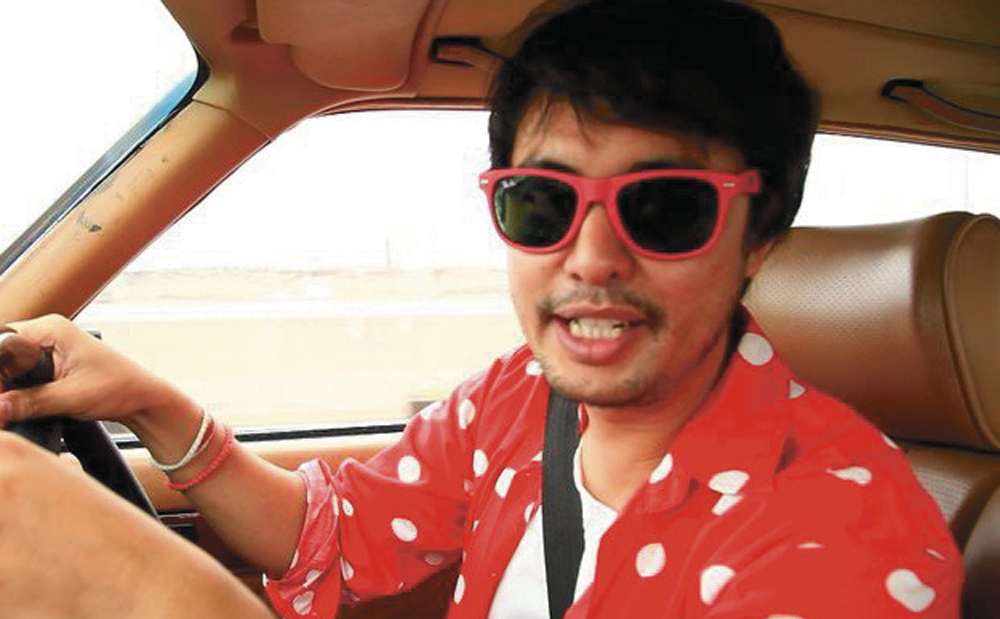 Why did you decide to make the switch from fashion to documentary photography?
Why did you decide to make the switch from fashion to documentary photography?
It’s boring taking photos of people my age. They’re always trying to act, trying to be cool. But taking these documentary style photos is very pure. My subjects don’t pose. They’re just themselves.
What sort of feedback did you receive about your exhibition?
I was flipping through the guest book from the opening night of the exhibition and someone had written, “We need people like you to keep social issues alive.” That was really inspiring.
Why focus on projects about youth culture?
I think it’s fun to observe and examine a new way of life, and study a new culture that’s always overlooked. You can see how politics actually shapes culture if you take the time to look.
So you think there’s a political aspect to your images?
Everyone’s so crazy about politics, but politics are right in front of our own eyes. I don’t want to tell people that my photos are political because I think a portrait of a child left on the streets is strong and already loaded with meaning. I’m just trying to remind people that they should just open their eyes a little bit.
Do you think your photos can make a difference?
I don’t think my photos are art. They’re more like recording and communicating feelings. I hope that my work is more than just photos. Interview by Clae Sea
For over twenty years Sitthiporn Thumnieam-ngarm has been part of the non-profit organization Baan Somdej, devoting his life to teaching street kids.
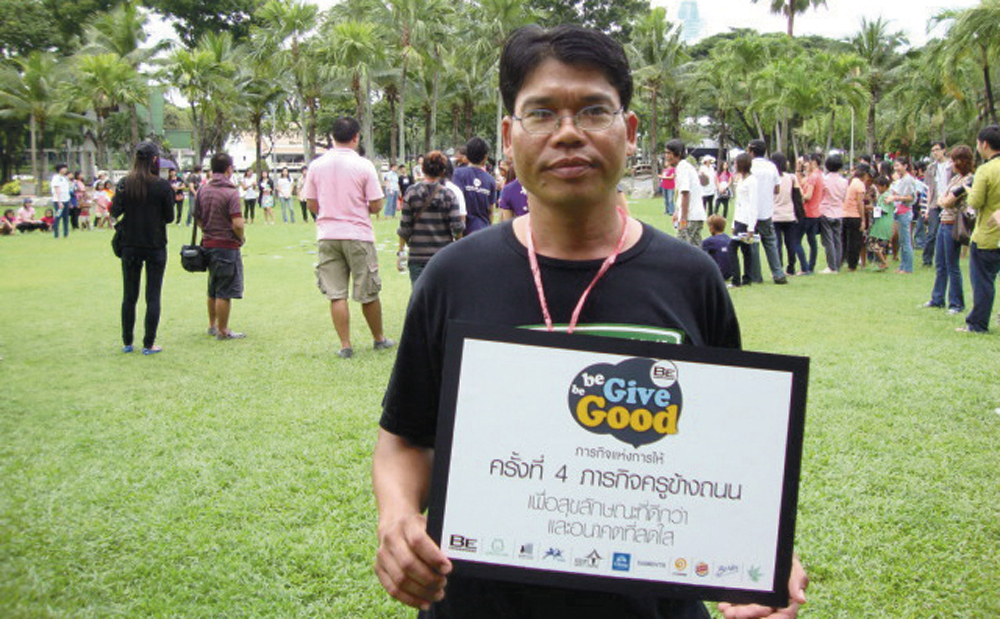 How did you start out working with the kids?
How did you start out working with the kids?
I studied at Ramkhamhaeng University and while there I helped out at camps in the rural provinces and border areas. I saw a lot of things I wanted to change. The camps changed my perspective. Then in 1989 I moved back home to Pathum Thani, just when the Baan Somdej foundation started the second generation of child care projects.
How do you get through to the kids?
I take them to the zoo, give them crayons and teach them to draw. It’s mostly recreational stuff we do. I just want them to not be afraid because the main goal is to have them stay at a proper residence. They need to trust us first and the method varies depending on each case. Most of the time, the kids aged up to 12 are easier to get through to. The hardest ones are those between 17-22 because they’re already hardened by the street lifestyle.
So how and when do you find them?
I am out all the time, but when depends on the area. The street kids in Hua Lampong are around during late afternoon until early evening. For the Rangsit kids, we’ll mostly see them in the early morning, between 6am-8am.
What are some difficulties you face?
Some of the kids we see in the street have been kidnapped. It’s difficult to tell the difference between those kids that have left abusive homes and those that have been forcibly taken by gangs. Dealing with the gangs can be tricky, if I step on their toes. In the past, I could get in trouble with the cops too. If the police see me hanging out with a gang of kids, they can throw me in jail because there’s nothing that says I am working for a street kids organization. It took 15 years for our organization to become widely known.
Does the government do enough for youth in Bangkok?
Our foundation is not the solution to taking care of the streets kids issue. There are two or three ministries that are responsible. But have you ever noticed the kids wiping windshields in the street in Silom Road? And do you see the police just standing there not stopping them? That’s how it is. I think it is strange how they don’t act unless there’s an order from the big guys. Interview by Ubonwan Kerdtongtawee
Surachai Sukkhiawon is the director for the Baan Nok Kamin Foundation, a house for orphans and homeless children.
 Why did you get involved with street kids?
Why did you get involved with street kids?
I was actually an orphan and street kid myself. I was lucky, I had the chance to study at Ramkamhaeng University and I volunteered to teach street kids at the same time. Afterwards I came here to Baan Nok Kamin.
What kind of issues does your charity have to try and tackle?
We get all sorts of problems, whether if it’s to do with the street children’s documents or no permission from parents. So it’s difficult for them to get into school, even get an ID card. We also need to find these kids that no one cares about.
Why do you try and help?
If these kids grow up without anyone caring for them, they’ll turn into bad people and we’ll become their victims. There are kids in society that have problems.
How do you get these kids to trust you?
When I was a street teacher and met these kids, I’d try to give them advice and bring them into the family, which is the family of Baan Nok Kamin. We take care of them, give them education, teach them to be good kids and see the value of themselves—make them feel that they can live in society with dignity.
Where do their problems stem from?
Some kids are from broken families, or their parents have abandoned them. This creates problems in their mind which make them run away from home or make bad decisions. And when they make bad life decisions, they become social outcasts and run into problems with drugs.
How should these problems be fixed?
The government has to give support to nonprofit organizations. We don’t have the authority to be their guardian.
What are they like when they first get here?
Some come in and are angry and selfish because that’s how they’ve survived so far. We try to give them love and make them feel like they are part of a family.
Are you in contact after they’ve left?
Yes, because we’re a family. Some have graduated from university or have started a family or are working and they do come back to visit us. They come to visit the kids or help with work-related matters. Or when they’re going to marry, they need me to support them like a parent as they have no-one. Interview by Sasinipa Wasantapreuk
Advertisement
Medium and Technique: Acrylic paint
Who are these characters?
At first, I tried to turn my friends’ personalities into pictures. Sometimes I get images in my head that I have to get out, and sometimes I’m captivated by looking at other artworks. I think they’re all real in my imagination. They just have their own life [in another realm].
What sort of art inspires you?
I really like folk art and primitive art. The colors feel like a mix of children’s books and a psychedelic mind trip. Like kids on drugs. My work is less inspired by the aesthetics of the art, and more by the feeling it evokes. I try to recreate the feeling I get.
Is there a deeper meaning that you’re trying to communicate?
The meaning is very subtle. Most people, when they see my work, think it’s lively, fun and happy. But actually, other people say it’s very lonely. Maybe not lonely, but evoking solitude. Lonely but happy also.
Do you feel a deep connection with your work?
Actually, in this exhibition, the original pieces are for sale, but I don’t know what to feel about it. It makes me feel like I’m giving my baby away to someone else.
Is there a societal significance?
Sometimes. I always feel a little bit guilty about it. I’m into politics also, but I can never make my work about politics because it’ll just not be sincere. I think my art and politics are separate. I think there are other ways you can help society.
Advertisement
Thai director Chira Wichaisuthikul's Lumpinee s not your typical pity party of a documentary. Following a group of young boxers training in a Muay Thai camp—run by a man devoted to the sport, Uncle Sak in Thailand's rural South—all gunning for a spot on Lumpini Stadium's fight card, the gritty documentary reveals the roots of the deadly ring sport.
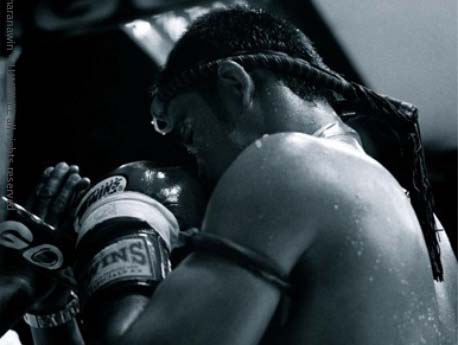
Technique: Mixed-media installation
What are you trying to communicate with the dart piece?
The main underlying idea of this exhibition is doubt. I wanted to investigate this fragile conflict inside our minds and how it makes us deny reality and isolate ourselves in our imagination.
What do the darts signify to you?
The darts show the very precise point of what one really aims at in one’s mind. This installation shows that having a bull’s-eye to aim for doesn’t mean one can hit it, but if you do hit it, it is something to treasure.
What was your inspiration?
I was not inspired by any external phenomenon. The whole work is a product of my thoughts about the conflict between continuous doubt, our certainties and temptation.
The small, white painting with one dart stuck in it blends into the white wall.
It it is part of a wall installation with five hundred darts that miss the target entirely and one dart which almost hits the bull’s-eye. The center is not hit, though, because I think perfection always lies one more step ahead.
Advertisement
It’s 8am and we’re supposed to meet Tankhun Jitt-itsara, the Democrat MP candidate for Don Muang (Constituency 12). Located at the furthermost points of the MRT and BTS plus another 20 minute cab ride, the Don Muang constituency is pretty far-flung from the center of the capital. The problem is, there’s no sign of him. We ring his mobile over and over, but no answer. Not even a text. Didn’t he tell us to meet him here? This is not the best way to make a first impression.
An hour later, he finally calls and tells us to cab over to a modest one-floor building with blue Democrat signs scattered everywhere. Inside his offices are a handful of people in blue getting ready to campaign for Tankhun, and against Pheu Thai’s political powerhouse, Karun Hosakul.
Tankhun waves us into his office. While his attire—brown, sporty leather shoes, slick, black pants, and a blue, Gingham shirt—suggest he’s come a long way from the shy, short-shorts-wearing pretty boy in the 2000 hit Thai film Satree Lek (Iron Ladies), glimpses of boyish charm do surface even while talking about the serious subject of politics.
“There are two things in politics: ideology and benefits,” says the new, 32-year-old politico. “Some politicians are so consumed by the benefits they receive that they forget about the ideology they once had when they started.”
The odds are stacked against him. Numerous sources predict that he’s going to lose the battle for a constituency that has been an epicenter of political turmoil. But he remains optimistic.
“There are three things [that will make me MP of Don Muang],” he says. “Making Don Muang airport ASEAN’s trading capital and an aviation school, extending public transport lines to the area and further to Rangsit, and being a role model to students.”
Our chat is interrupted as two people come in for a campaign strategy shake-up. In the midst of the intense brainstorm Tankhun turns to us and asks, “Is there anything you want to add? I want to know what you think.”
We don’t know if he actually cares or is just pretending to. But we choose to see a starry-eyed optimist who seems to truly believe that if everyone just talked things over, Thailand would be a better place.
“Thai people tend to keep their opinions to themselves but talk about it later behind each other’s back. We’re often kreng jai, which makes the whole society less sincere,” he says.
At 11am we hop into his decade-old, pearl blue Toyota Corona and head over to the police station. He tells us with a slight air of defensiveness (and a little bit of pride, as well) that this is the very first car that he bought himself.
He’s driving like he’s on a mission, weaving in and out of traffic. He pulls into the police station and by the time we gather our bags and leave the car, he’s already filing a second contestation against Karun. Allegedly, Karun has spread rumors that Tankhun’s father was so ashamed of his decision to drop his Chinese last name that he grew sick and died. The first one was about Tankhun’s vandalized posters.
“It’s not true or relevant at all,” Tankhun says of Karun’s allegation. While he’s writing a long formal statement and taking care of paperwork, we slip out with K, his personal assistant, to grab a quick coffee.
“It’s hard to trust people, especially in politics, and especially when you’re new,” K says. “Everyone in Tankhun’s campaign team has known him for years.”
It’s a little bit past noon when Tankhun gets out of the police station, heading to the Ban Somdejchaopraya Rajabhat University in Thonburi for a lecture.
“We have 45 minutes to get there, so we have to go fast,” he says, revving the engine.
Just on time, Tankhun slips on a blazer and steps on the stage facing an auditorium full of students. He speaks to them about the usual—life, love, and the importance of education—referring to himself as P’ instead of a more formal title.
The lecture ends. We leave as fast as we came. In between saying bye to the university advisors and giving an autograph to a student who rushes right in front of him, his only rest is inside the car on the way back to his office, where we get back onto the campaign truck.
We ride with the people in blue, over a bumpy road, watching Tankhun and his team greet everyone while their loudspeaker blares out old Thai songs. Despite being a newcomer, many people support him during his on-foot campaigning.
“It’s nice to see a new face in this area. It could be a huge challenge for him since he is stranger to the locals,” says Worachard Patinuntakul, 37, a Don Muang local. “If he could really turn the Don Muang Airport into something, we could start selling things here again.”
Though most greet him with open arms, one man was not so thrilled about him being around. “It’s always the same. They always come with great promises. But nothing ever happens. I don’t even know who I am going to vote for,” he said, on the condition of anonymity.
It gets dark, and the market starts filling up. We decide that it’s time to part ways. When Tankhun sees that we’re leaving, he offers some advice:
“Watching the game and playing the game is different,” he tells us between shaking people’s hands. “But you have to do both at the same time. You have to step outside of the game to see the bigger picture and the next step.” Clae Sea and Ubonwan Kerdtongtawee
Read part II of the Campaign Trail series: A day in the life of Sunisa Lertpakawat, author of Taksin-themed books and Pheu Thai's rising star.
Advertisement
1 Rong Muang Road, Gate 3 MRT Hua Lamphong, 02-613-9661. Open 10:30am–9pm.
If you’re going to cheat on your diet regime, then Laap Paak, with its cozy backyard-style atmosphere, situated just outside Exit 3 of MRT Hua Lamphong has just the dish to make it worthwhile: goong grabuang. A mince of chicken and shrimp deep-fried to a thick, crunchy pancake, the version at Laap Paak does an even more sinful mayo garnish, along with a bed of crispy-fried bai makrood (B95). They also do a hearty tom saep gradook moo (isaan-style pork rip spicy soup, B99), that is a great complement.
336/3 Rama IV Rd., 02-236-1772. MRT Hua Lamphong. There are also branches in Emporium and Siam Paragon. Open Tue–Sun 5-11pm.
Ignore the Hong Kong Noodles sign outside MRT Hua Lamphong Exit 3, and walk across the street to the more unassuming, family-run and pretty famous noodle shop. You’ll know you’re at the right place because Sawang is always packed with people waiting for their freshly pulled noodles drenched in a delicious broth that’s not too sweet and not too sour (B100). If you’re feeling extra hungry, get them to throw in some fresh crab for an added B100. They also specialize in Cantonese delights like kanom jeeb. There are other branches now, but the Hua Lamphong location is where it all started.
Noi Market on Khao Lam Rd., 081-620-1788. Open 7pm–11pm.
Down Khao Lam Road, opposite Wat Tri Mitr Witthayaram, is a street vendor that serves 10 different kinds of ruam mitt nam gatthi—another family-run business that keeps Hua Lamphong foodies happy. The classic myriad beans, water chestnuts and gelatins in all shapes and colors go for B35 a bowl—cheap enough to try out a couple different flavors in one sitting.
Gate 3 MRT Hua Lamphong, 1 Rong Muang Rd. Open daily 24hrs.
If you’re just hungry for some simple Thai dishes you could find on your soi, like som tam and khao pad, check out this small tam sang place that serves all the essentials. Their kapow gai is a local favorite (spicy stir-fried chicken with basil, B39). The small restaurant is perfect for a quick fix if you’re stuck waiting for a train, but don’t go out of your way to eat here.
Maitri Chit Rd., Wongwien 22, 303. 084-935-2935. Open daily 9am–8pm, during Feb-Jul.
Named after two aunties, this little shop has been in the mango biz for 72 years. Their kao niew mamuang (B70-B80 depending on the price of mangoes) is worth the trek if you’re feeling adventurous. Take a walk across the green bridge to the left of Exit 1 of MRT Hua Lamphong and walk down Maitri Chit until you hit a roundabout. The little shop is on the left, but unfortunately it’s only open during the mango season, from February until the beginning of July, so you better go today.
80-82 Soi Sukon 1. 081-567-9006. Open Daily 9am–8pm.
Another family-run business that serves one thing and one thing only: bountiful plates of juicy pork, smothered in a delicious pork sauce (B42). Cross the magical green bridge (see above), hang a left and look out for Soi Sukon 1. Walk down the soi for a little bit and try to resist the temptation of the other stalls on this street.
Soi Sukon 1. Open daily 9am–8 pm.
If you’re feeling extra carnivorous, the store right beside Simalogot serves pork and liver satay. What’s the difference between these and the sticks you can get anywhere else? Their dipping sauce is a cultural hybrid, they say, a combination of Thai and Chinese flavors, with lots of peanuts (B60 for 10 sticks).
Advertisement
You’re on a hot streak right now.
Well, this year has been a really good year for me. I got signed with Billabong and Converse this year. They help me out a lot.
When did you first turn pro?
In 2005, I got my first pro model with Preduce at the same time their Siam Square shop opened. It was amazing. Preduce set up a party at a really good night club, and all the skaters from Thailand came over. [Lert Saeri] and [Tao Kitpullap] popped champagne and gave me my first pro model decks. It was such an honor. We were the first pros in Thailand.
What’s it like skateboarding in Bangkok?
It’s tough because there’s security everywhere, and the sidewalks are hard to walk on, let alone skate on. Plus there are barely any parks, but we know what we gotta do. We wanna learn new things everyday so we gotta skate. That’s the skater spirit. You skate the street and you make it happen.
What did your family think about you becoming a professional skateboarder?
When I told my mom that I really wanted to go for it and skate and go to contests, she didn’t understand. Back then, I had a sports scholarship playing basketball, and she wanted me to keep doing that so I could pay for school. It took a lot of explaining, but she let me do it. These days, she’s accepted it. She’s surprised that skateboarding has taken me so many places.
Have you ever broken any bones?
Yeah I popped out my elbow two months ago in Nay Pi Daw in Myanmar. It was really crazy. There’s nothing much there, not even a hospital. We called somebody and he drove me around for like two hours to meet a guy with a sarong, and no x-ray machine, nothing. He gave me an injection and scribbled out a map. He couldn’t speak English or Thai. I broke my elbow at 5pm and finally got to a hospital at 10pm.
What’s the best part of being sponsored?
I feel like I made it. I travel to see different parts of the world, meet different people all the time. What can I say? I make money to live and do what I love.
Would you have the same life if you didn’t skate?
I don’t think so. If I keep playing basketball, I don’t think I’d have a chance to see Myanmar and Vietnam the same way. There’s not going to be basketball tournaments there for sure. It’s something real. Skateboarders everywhere are like a big family. Wherever I go, I have a place to stay.
Advertisement